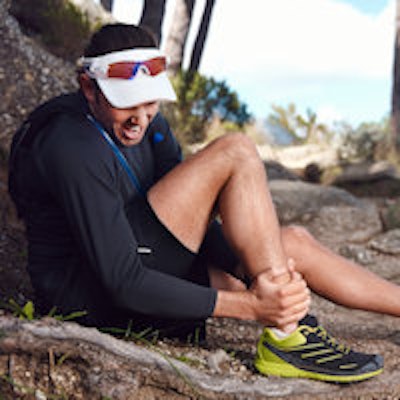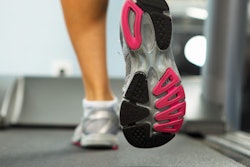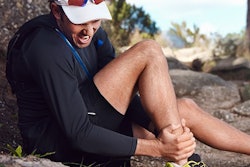
Shear-wave ultrasound elastography studies may be able to shed light on why middle-aged adults face an increased risk of Achilles tendon injuries, according to research from the University of Wisconsin School of Medicine and Public Health.
After using a shear-wave elastography technique to study the Achilles tendon in both young adults and healthy middle-age adults, the researchers found that one specific area of the tendon -- the gastrocnemius aponeurosis -- demonstrated effects from aging. They shared their findings during a scientific session at the recent RSNA 2014 meeting in Chicago.
The Achilles is the largest and most frequently injured tendon, and the incidence of injury increases with age. A large-scale study in the literature found that runners older than 40 were more than twice as likely to injure the Achilles tendon and calf muscle, most often as Achilles tendinopathy and gastrocnemius muscle strains, said presenter Laura Chernak Slane, PhD.
Several studies have examined the biological changes in the tendon that occur from aging. Researchers found a variety of factors that occurred at different scales in the tendon, including an increase in elastin content, a decrease in collagen fibril diameter, and a decrease in fascicle sliding.
"But it's challenging to understand how these microscopic changes affect whole-scale tendon mechanics," she said.
In recent years, there's been a lot of emphasis in the biomechanics community on using ultrasound-based methods to track anatomical landmarks while a subject undergoes different types of loading patterns, Slane said.
Conflicting literature results
These in vivo observations in the literature have yielded conflicting results, however. Some studies found that tendon strain increases with age, while others found that tendon strain decreases with age. Another study found that tendon stiffness was the same between age groups.
"So it's unclear what is really happening as we age," she said. "We hypothesize that this might be due to the fact that oftentimes these anatomical landmark-tracking approaches look at large portions of the Achilles tendon, all the way from the calcaneus to the gastrocnemius muscle tendon junction -- really large regions."
The group was interested in learning whether there were spatial variations among different tendon regions that might explain the conflicting results, Slane said. The researchers used a commercially available imaging technique (supersonic shear imaging, SuperSonic Imagine) to evaluate tendon mechanical properties at high resolution.
With the quantitative technique, a focused ultrasound beam induces shear waves in the underlying tissue; the shear waves are then tracked as they propagate throughout the tissue via collection of ultrahigh-frame-rate data. Average shear-wave speeds are calculated and displayed for manually selected regions of interest on the ultrasound image.
"Shear-wave speed is an important mechanical characteristic because it relates to the elastic modulus of a tissue," she said. "As shear-wave speed increases, we expect an increase in tissue stiffness."
The study included 10 healthy young adults (seven females and three males) with an average age of 25 ± 4 years, along with 10 healthy middle-aged adults (five females and five males) with an average age of 49 ± 4 years.
Shear-wave speed (SWS) was measured at three Achilles tendon areas (the free tendon, the soleus aponeurosis, and the medial gastrocnemius aponeurosis) at rest and at dorsiflexed and plantarflexed angles.
Significant variations
Shear-wave speed varied significantly according to imaging location; the free tendon had the highest speeds. In addition, ankle posture significantly affected SWS; speed progressively increased with ankle dorsiflexion along the whole length of the tendon, the researchers found.
There was only one significant age-related difference: a significant reduction in shear-wave speed for middle-aged adults in the gastrocnemius aponeurosis, which "corresponds with the region where calf muscle strains are thought to occur," Slane said. "A lot of MR images show them originating near the muscle-tendon junction."
A significant inverse relationship was seen between resting gastrocnemius aponeurosis SWS and age (R2 = 0.34, p < 0.01), and a similar relationship was seen in the gastrocnemius aponeurosis in the dorsiflexed posture (R2 = 0.55, p < 0.01).
Because it's difficult to distinguish the relative contributions of different factors behind these tendon changes, the researchers are now collaborating with a team from the University of Virginia to build a musculoskeletal model to help them interpret the study results, Slane told AuntMinnie.com.
She noted, however, that the significant variation in shear-wave speeds found in different regions of the Achilles "emphasizes that when we're looking at different studies or when we're using it clinically, it's really important that we think about what region we're using and how we're comparing that."
Postural angle also significantly affected SWS, so it's important to report and consider angle and posture with these studies, she added.
The results also suggest that different portions of the Achilles tendon may be changing in different ways.
"I think it's important that we consider and continue to look into how aging is affecting different portions of our tendons," Slane said.




















